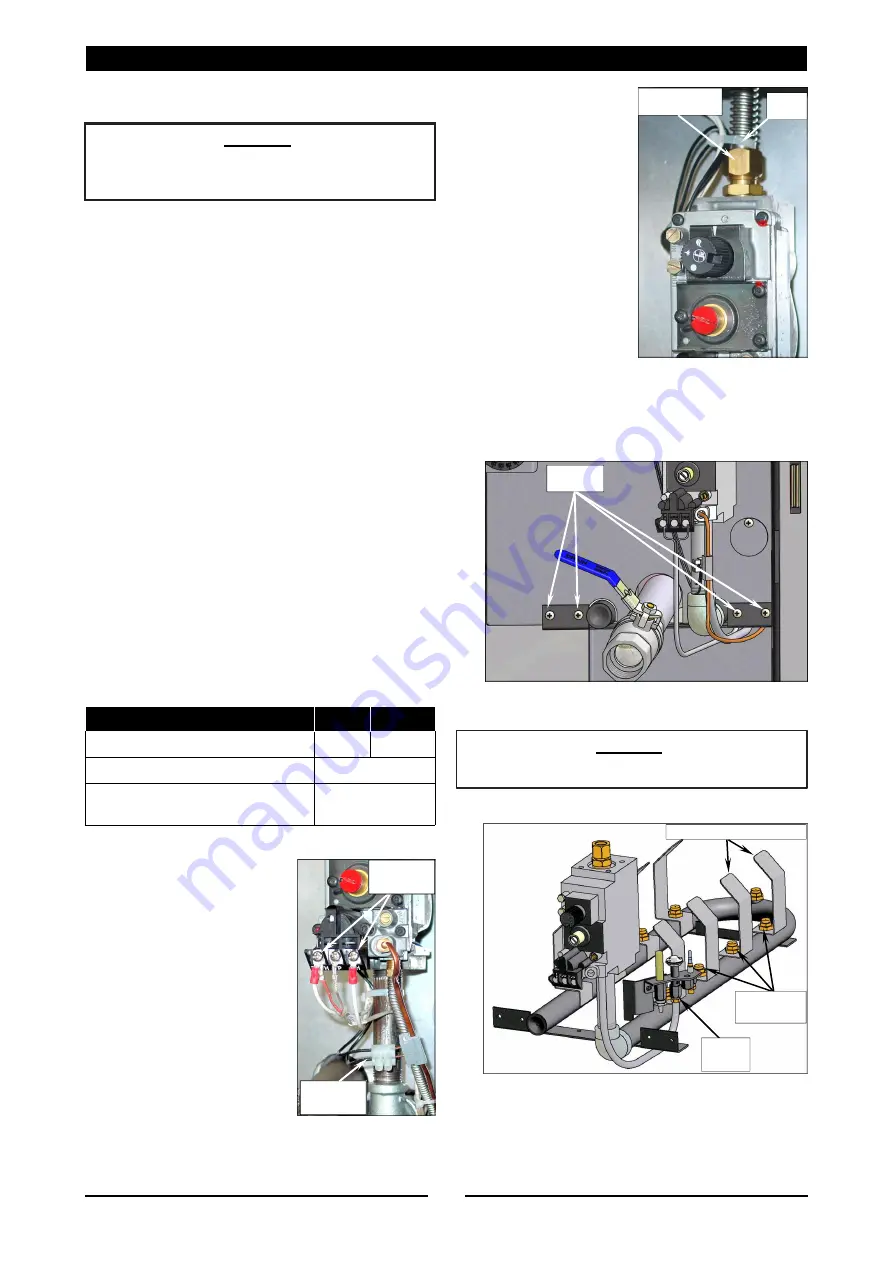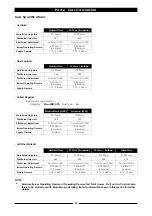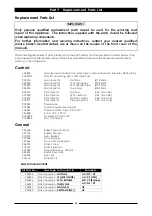
13
Part 6 Gas Conversion
Gas Conversion Procedure
NOTE:
These conversions should only be carried out
by qualified service persons. All connections
must be checked for leaks before re-
commissioning the appliance.
For all relevant information and specifications
refer to the table at the end of this section.
Flexible Hose Connection;
If a Gas Hose assembly is used to connect this
appliance, the hose and all fittings must have
a minimum
¾
” (Natural Gas) or ½” (LPG)
inside bore diameter to ensure gas flow rate
capacity required by this appliance is
achieved.
This must be verified by operating pressure
testing at maximum gas supply demand
condition.
The Gas Hose assembly should also be
classified for use in the commercial kitchen
conditions, the appliance will be used in.
Recommended Gas Hose Assembly Specification:
- AS/NZS 1869 Class B or D compliant or
equivalent, that meets the following
requirements:-
1. Ensure that the gas supply
has been turned 'Off'.
2. Open the front door of the
fryer to access the main
burner and pilot burner in-
jectors.
3. Disconnect 2 wires from the
Thermostat to the Gas
Control Valve.
4. Disconnect 2 wires from the
Overtemp at the electrical
connector.
5. Cut and remove any
cable ties as required
6. Disconnect the flexi
tube gas connection
at the top of the Gas
Control Valve.
7. Undo and remove the 4 screws securing the
front of the burner to the burner box.
8. Pull the burner towards the front of the fryer and
downwards to remove.
9. Remove the Burner Assembly to a workbench.
C
AUTION
:
Ensure that the Unit is isolated from the gas
supply before commencing servicing
Class
B
D
Max Working Pressure at 23 ± 2
ºC
7.0 kPa 2.6 MPa
Working Temperature Range
- 20
ºC to + 125ºC
Resistance to Oil
Oil resistant lining
and cover.
Overtemp
Wires
Thermostat
Wires
Disconnect Gas
Connection
Cut Tie
Wraps
Remove 4
Screws
Main Burner
Injectors (9)
Pilot
Injector
C
AUTION
:
Do not bend the Flame Deflector Plates.
Flame Deflector Plates
Summary of Contents for Evolution GT18 Series
Page 19: ......





































